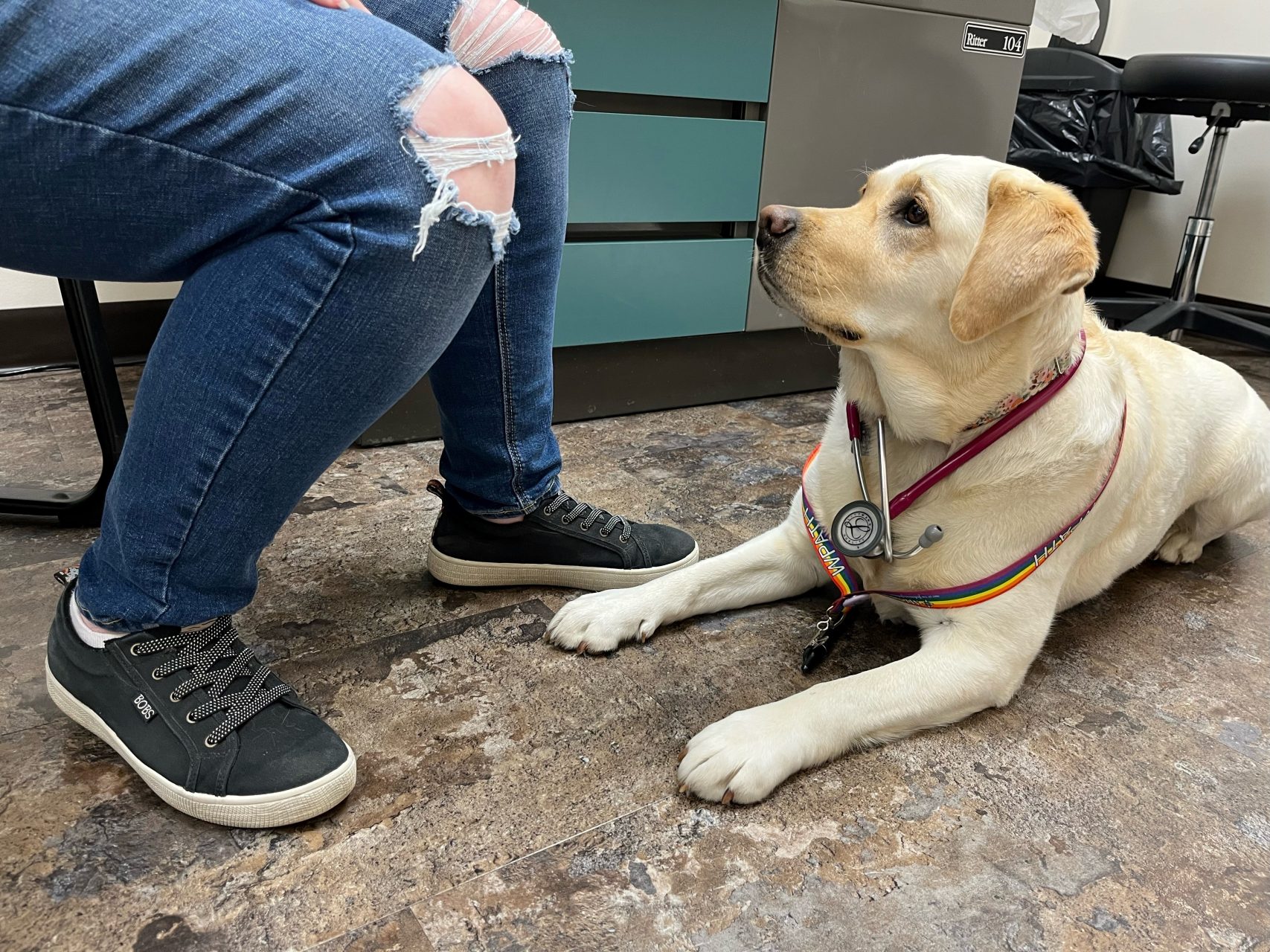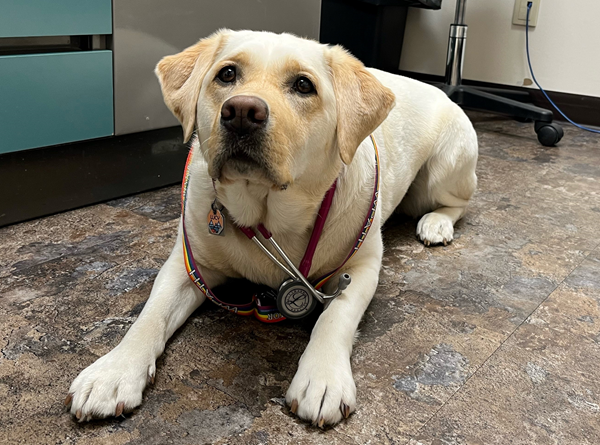By: Dr. Charissa Ho
In honour of National Pet Day (April 11, 2024), this blog post is dedicated to all the pets that get us through our best and worst times.
I’ll admit it, I am that millennial that’s late for work because my pandemic dog won’t poop. I love my dog and I would love for her to be at work with me every day. How does a physician bring their dog to work? What are the logistics of bringing your dog to work? What are the benefits? What about risks? This blog post will briefly review “how to bring your dog to work.”
Note: This blog post is only the opinion of one person and different workplaces vary in their policies for having pets at work.

I Love Lucy
Bringing your dog to work can have many benefits (in my opinion). When I bring Lucy to work, the staff at the clinic or long-term care light up. Lucy, being the friendly faced little English Lab that she is, gently bumbles around and says hi to people. She has also learned who are the people who will give her treats. The key to a Lab’s heart is food. Lucy’s clinic routine tends to be hanging out with one of our MOA’s Cathy (the food dealer). From behind the front desk, she sits or lays quietly and greets patients that want to be greeted. Patients, even if they’re not mine, are welcome to say hi to her while she is in the clinic. When I am seeing patients, depending on the patient, I would ask if they would like to have Lucy in the room during our visit. Generally, Lucy is very welcomed during mental health visits and she sits quietly beside the patient after some pets. Lucy is never allowed during procedures, even injections, in case she decides to be chaotic. Understanding that seeing many people and being in a busy office is very stimulating for her, she usually gets picked up part way through the day to go home to rest.
When I bring Lucy to long-term care, it is generally a quick visit day, where I’m anticipating being there for no more than 2-2.5 hours. Again, depending on the patient, I would bring her into his/her room. I would say most people welcome Lucy’s visits. When we are walking around the facility, I do keep her very close to me, so she doesn’t accidentally approach a person that does not want to be approached. The big thing about going to long- term care is alarms, machines, wheelchairs, walkers, and all sorts of other strange things that a dog usually doesn’t encounter every day. Overtime, I have taken Lucy for longer and longer visits (quick 15 minutes at first then slowly extending the time) so she can be exposed to the environment and associate it with good things (treats!).
When I bring Lucy to work, I recognize that she is not certified in anything other than being the best pet ever. Even if she was a certified volunteer dog with groups like PALS or St. John’s Ambulance, I would also have to recognize that unless it is registered volunteer hours with the group, other times she is “at work”, she is not there under the certified titles. For example, PALS comes to visit at my long- term care. When I bring Lucy to visit at long- term care, I know that she is not a volunteer dog, she is my pet that I have decided to bring to work to share with others. As much as I would love to have Lucy at work every day, I recognize that she is still a young dog who wants to do dog things like play and nap. I specifically choose quiet clinic half days to bring her to work, or quiet long- term care days so it does not overwhelm her capacity. I also recognize that when she is around, I work a little slower, taking time to say hi to her, or ask patients if they want her in the room. For now, bringing Lucy to work is a treat. Maybe one day, as she ages and needs less play time, she could become a permanent fixture to my clinic days.

Dogs in the Workplace
Bringing your dog to work depends on your work place policies. Many of us work in privately owned clinics where pet policies can be worked out with the clinic owner. For places such as long- term care or assisted living facilities, it would depend on the facility’s policies on bringing visiting pets. For hospital-based settings (keeping in mind I do not work in hospitals), probably best to speak with your hospital administrator.
Logistics to consider when bringing your dog to work include:
- The dog’s temperament – Will it bark at every one who walks in? Will it be able to stay calm in the clinic?
- Is there a space where the dog can have some reprieve if it gets over-stimulated?
- People with allergies – How will you handle those situations? How do you make sure your clinic or workplace is allergy friendly?
- People who are afraid of dogs – how will you ensure that the clinic or workplace is a comfortable place for them while your dog is present?
- If you are not able to tend to the dog, is there a place the dog can go to that will be safe? Does the dog need a person to tend to them all the time?
- Will your dog be a welcome distraction at work, or will your dog be too distracting?
- How will you meet other doggy needs? Will you be able to take your dog out for bathroom breaks? Would someone else be able to do that?
- How do you prevent your dog from wandering into “clean” spaces such as autoclave areas and procedure rooms?
I am a big believer in pets being therapeutic. Whether it is a dog, or cat, or any other kind of pet you have, harness their power in being able to bring joy into your life. And tell your pet I say hi.


One Response
Love it Charissa! Tuco says hi 🙂